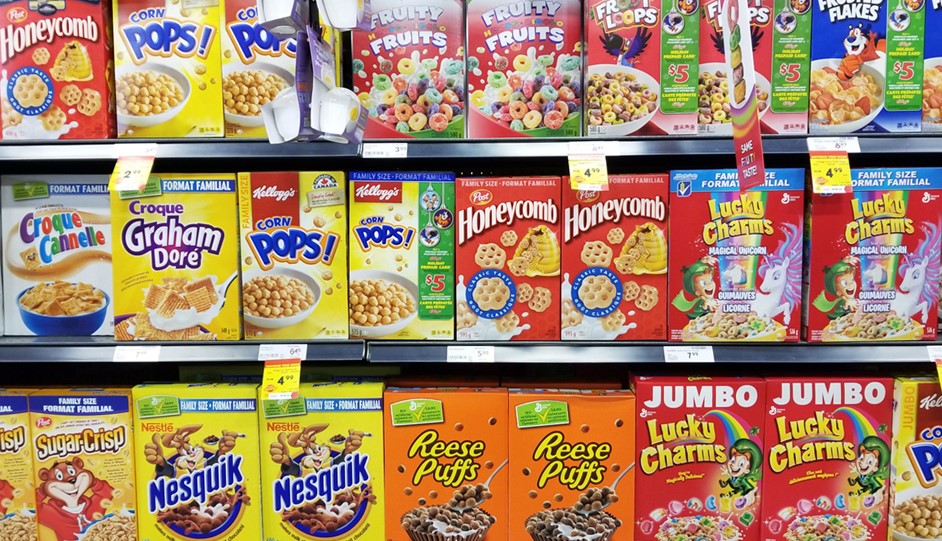Trends analysis of Cereal Packaging – 1900 to 2020
Cereal products serving nature
The cereals are classified as a Ready to Serve package. It can simply serve with hot and cold milk. The cereals are made from whole grains and milled grain, and the product is in the form of flaked, puffed, shredded, and granulated products.
PRODUCT BEHAVIOUR OF CEREAL
Whatever the product, if we pack that product, we need to understand its characteristics. Same as in the case of cereal packaging ultimately depends on the nature of the product, such as moisture, retention of nutrients, and being prone to microbes. So the customers expected the packaging technologist regarding the breakfast cereal packaging could have their product crispy and nutrient retention in the product.
The category is divided into two types of products.
- HOT FILL – made with whole grain and must be worked before eating.
- COLD FILL – products are like shredded wheat, corn flakes, and granulated cereal, which is coated with sugar.
Now, all the industries added flavoring agents in their “Ready to eat” products. It is processed with the flavoring agent—packaging and subsequent aeration and drying to create a puffed crisp product.
Deciding the shelf life and packaging material based on the below criteria:
- Oil content The grain product is usually wheat, maize, and rice, where the oil content is 1.5-2%, but oats it has 4-11% of oil.
- Moisture – It gaining the product hardness entirely depends on the barrier property of moisture. The consumer does not want a moist product in their breakfast.
- Barrier from the light – Similarly, it needs a barrier from the direct sunlight to get protected from the brittleness property.
- Lipid oxidation is just liked a chemical deterioration. And it’s a major cause of deterioration in food quality and products. Lipid oxidation has long been recognized as a significant problem storing fatty acids in foods.
- Mechanical damage – During transit, packaging rigidity needs to preserve the packaging during transit and vibration damage.
- Loss of vitamins/ aroma maximum cereals flavor with fruits.
The cereal packaging should depend on the analysis based on compatibility, stability, and transport worthiness tests.
TIN for Cereal Packaging
Initially, cereals were introduced in the early 20th century in the US or some parts of Europe. The packaging used by TIN to pack the oats cereals and other varieties of cereals. The TIN packaging is one of the most exquisite, easy to carry, reclosable, reusable, and recyclable.

But of course, plastic wasn’t invented yet. But today, we have a vast choice to pack the cereals in multiple ways.
Based on the moisture permeation through the wall of the container, we can select the packaging material.
During World War II, plastic is on the boom in the market
So, the available option in the market for the packaging of the cereal are:-
A. Rigid Pack – Cereal Packaging
- PET container
- Metalized polyester film (inside liner)with Monocarton (3Ply or Cardboard)
- Metalized BOPP film (inside liner) with Monocarton (3Ply or Cardboard)
B. Flexible Packaging for Cereals
- Trilaminate Pouch (PE/AL/PET) with Zip opening
- Kraft Paper Pouches (newly added to the benchmark)
We have many options in tri-laminate pouches
such as stand-up, side-gusset, 3side seal, and bags with handles.




I am suggested to go to the link and check the permeation level through the packaging material and decide on the packaging material. Every product has a certain level of moisture ingress and is based on determining the packaging material.







Pingback: Sustainable Packaging Solution for food packaging | PackagingGURUji
Pingback: Innovative Recyclable Plastic MultiPack TIN CAN carrier | Wave-Grip
Pingback: Soothe 'n' Chew teething sticks for babies - PackagingGURUji
Pingback: Coveris nominated for UK Packaging Awards 2020 | PackagingGURUji
Pingback: Find out the evaluation of Super Secure Packaging product | Unboxing
Good post. I am going through some of these issues as well..
Pingback: Innovative FibreForm paper tube for tootpaste and cosmetic
Pingback: Cereal packaging with high-performance, home-compostable laminate